The best way to immerse yourself in the essence of Quito’s Old Town, a place renowned for being part of one of the most well-preserved historic centers in Latin America, is by walking around or engaging in activities in Quito. As you meander through its streets on foot, the city unveils its atmospheric blend of history, traditions, and vibrant local life. You’ll wander past picturesque squares and baroque churches, set against a backdrop of snow-capped peaks, embodying the heart of the historic center. Indigenous people in their delicately embroidered shirts and traditional hats weave through tourists, while street vendors and shoe-shiners add to the lively ambiance. The tantalizing aromas of Andean cuisine escape from the restaurants that dot the streets of Quito’s Old Town. Nestled in this historic tapestry, Casa Gangotena offers an unparalleled starting point from its excellent location in our boutique hotel in Quito, inviting guests to step out and explore the myriad of activities that dive deep into thousands of years of history.
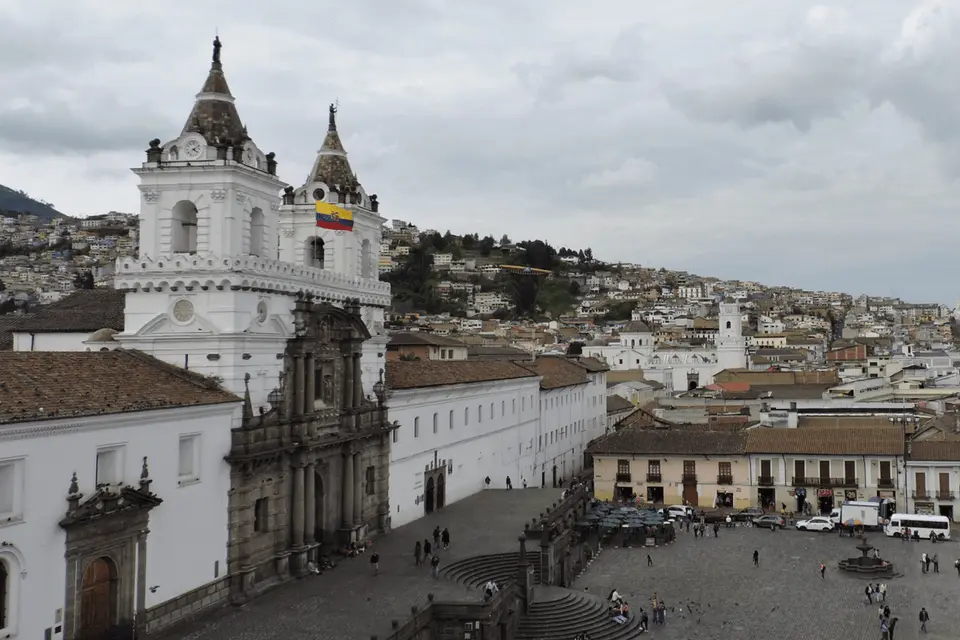
Explore the wonders of Quito’s Old Town all within walking distance from Casa Gangotena!
From Plaza San Francisco to San Marcos
Before venturing through the city, consider embarking on one of the many full day tours available that showcase the heart and soul of the capital city. Calle Cuenca is an iconic street that truly captures the essence of traditional Quiteño life, making it a perfect first stop. As soon as you step out beyond Casa Gangotena’s garden, the local atmosphere envelops you with an aroma of herbs while colorful piñatas decorate the street, inviting interaction with local people and their vibrant culture. The spice store facing Casa Gangotena, filled with jars and wooden boxes brimming with delicacies, becomes an irresistible attraction, showcasing the rich culinary heritage of the area.
Only a few meters from the hotel entrance, the Museum Casa del Alabado offers a deep dive into Ecuador’s history with its impressive collection of pre-Colombian pieces representing various Ecuadorian ethnic groups. Housed in a beautifully restored Colonial house built in 1611, the museum also provides a quaint patio where visitors can indulge in a cappuccino paired with delightful chocolates made from figs harvested from the trees that grace the museum’s upper patio. Such full day tours in the capital city not only offer a glimpse into the historical and cultural richness of Quito but also foster genuine connections with the local people, making your visit truly unforgettable.
Embarking on a free walking tour offers an enriching way to explore the heart of Quito, bringing its history and culture to life right before your eyes. As you exit towards Calle Rocafuerte, you’ll find yourself in the Santa Clara Plaza, a perfect starting point for such a tour. Here, visiting the monastery and church provides a glimpse into the city’s spiritual heritage. Continuing downhill along the street, the Museo de la Ciudad awaits, not with typical archaeological artifacts, but with a narrative that captures the essence of everyday Quiteño life from its aboriginal origins up to the 19th century.
A journey through La Ronda is quintessential to understanding Quito in the 1800s. This bohemian neighborhood, best experienced on a free walking tour, reveals itself as a winding street adorned with geraniums and colorful flags, evoking the city’s vibrant past. The Zabalartes toy store, with its spinning tops, yo-yos, and wooden dolls, showcases the enduring charm of Quito’s cultural artifacts. Along the way, savor a plate of traditional Ecuadorian cuisine and warm canelazos in bars filled with the joyous sounds of live music. A visit to the República del Cacao and Chez Tiff stores to purchase chocolate made from the finest Ecuadorian cacao is a fitting finale to this immersive experience. Through the lens of a free walking tour, the layers of Quito’s rich history and culture unfold in a manner that’s both engaging and memorable.
As you leave la Ronda, via Calle Guayaquil, keep walking toward Plaza Santo Domingo, and continue left toward Calle Flores, where you’ll find a series of stores specialized in candle making. Since you’re already here, buy a set of hanging candles in the shape of a bouquet of flowers, available in a variety of colors.
When you reach the corner café, Dios No Muere, turn right on Calle Junín. Walk along a huge white wall belonging to the Santa Catalina Monastery, one of the five oldest female cloistered convents in the city. Before reaching Plaza San Marcos, you’ll come across many places to dine, such as Café Khipus (they make tequila and piña colada flavored chocolates) and the “hipster” bar, Sirka, which showcases murals and paintings by local artists.
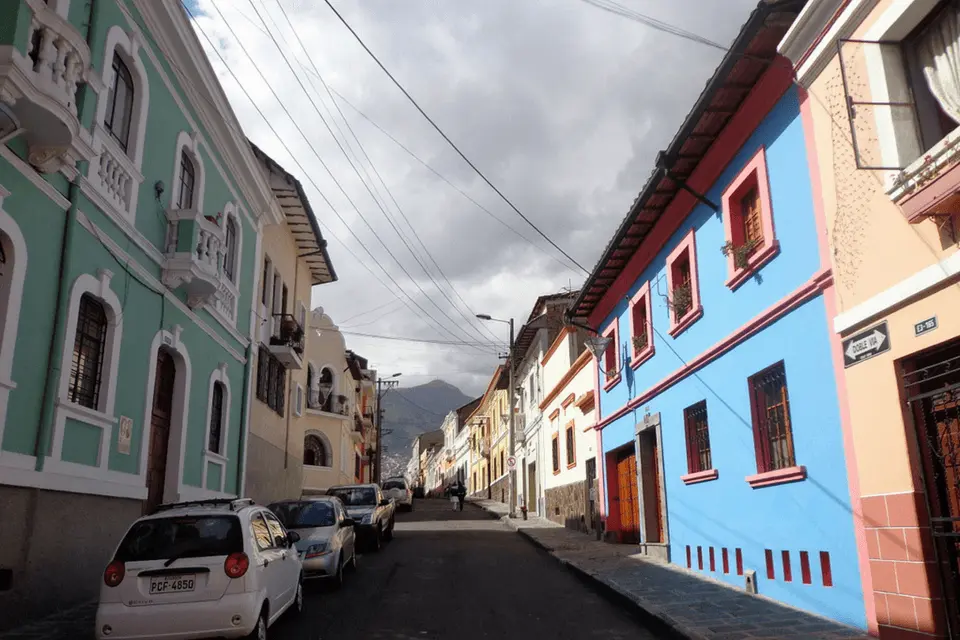
From Plaza San Francisco to the Basílica
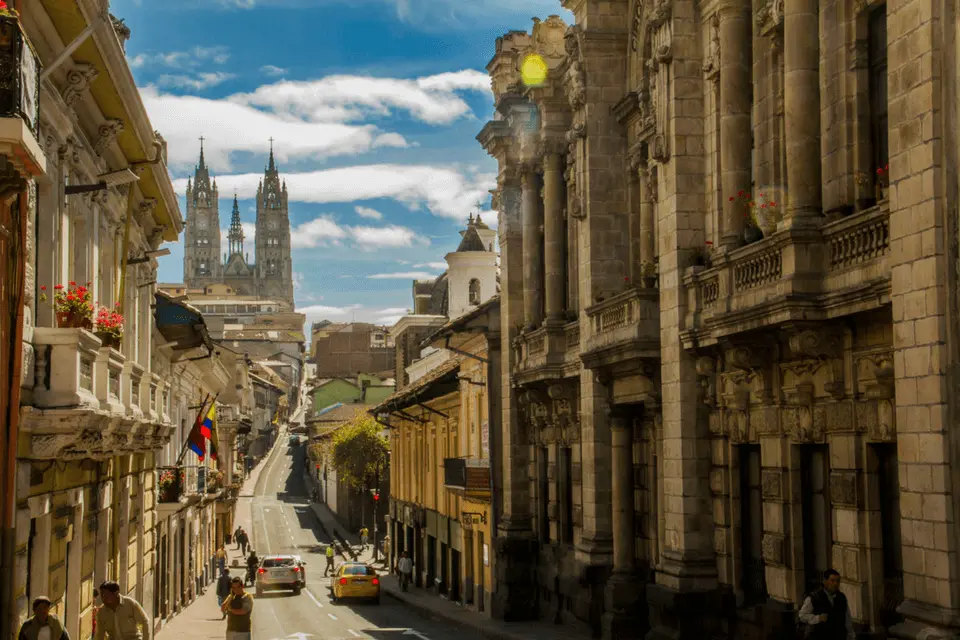
Exiting Casa Gangotena, a perfectly situated Quito Old Town hotel, you’ll find yourself before Plaza San Francisco, with a background of the majestic Pichincha and the massive stone bell towers of the oldest church in Ecuador. Under the arches of San Francisco’s atrium, you find Tianguez, a terrace café overlooking the domes of the surrounding churches. Tianguez means “market” in the ancient dialects of Quito and, as its name indicates, the café also contains a museum of handicrafts. In the tunnels built under the church of San Francisco, you can find all kinds of crafts, such as jewelry made out of tagua seed, detailed ceramics, and colorful animal masks.
As you walk downhill on Calle Sucre, you arrive at the Numismatic Museum, the former building occupied by the Central Bank of Ecuador. The museum recounts the story and evolution of Ecuador’s currency, the sucre, including periods in pre-Hispanic aboriginal societies, its impact on the colonial period, and the issuance of banknotes until dollarization.
On the opposite side of Calle Sucre, you reach the imposing façade of the Church of the Company of Jesus (Compañía de Jesús), made of Andean volcanic stone. Every surface of its interior is bathed in gold leaf and decorated with paintings by artists from the Quito School of Art and beyond. The church is considered the most beautiful in the country. Among the activities in Quito that you shouldn’t miss is climbing to the top of its dome.
Take a short break and sit on one of the stone benches in the Plaza Grande to catch your breath. In the center of the plaza stands a monument in honor of Ecuador’s Independence Day –
August 10, 1809. On the periphery of the plaza, you’ll see a series of historic buildings. To the North is the Archbishop’s Palace, where you can have lunch in one of the cozy restaurants. The Cathedral of Quito, one of the oldest churches on the continent, is located on the south side of the plaza. You can also admire the Government Palace, a white building crowned with a huge Ecuadorian flag. If you happen to be here on Monday at 11 am, you will catch the change of guards, a popular activity in Quito.
Continue north along with Calle Venezuela, where you’ll spot the silhouette of the Basilica’s gothic towers in the distance on the hill. A few steps away lies the Carmen Bajo Monastery. Be sure to admire its marvelous front door, carved by one of the few female artists of Quito’s Colonial period: Mother María Magdalena Dávalos. Up ahead, you come to the colonial façade belonging to the house of the Camilo Egas Museum. Here, you can enjoy the works and legacy of Ecuador’s forerunner of modern and contemporary art.
Façade of the Basílica
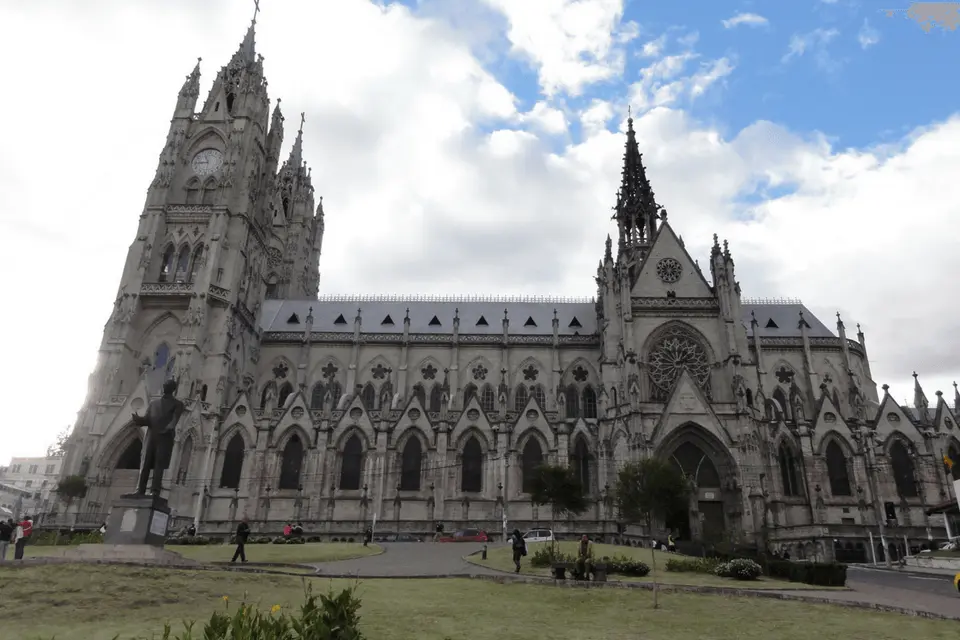
Continue along this street until you are at the foot of the Basilica, the largest neo-Gothic church in Latin America. What sets it apart from other churches of this style is that, instead of traditional gargoyles, this Basilica is decorated with turtles, iguanas and other creatures endemic to Ecuador. Inside, its gray walls are illuminated by the sun’s rays that shine through the stained-glass windows. The legends that surround the Basilica add intrigue and mystery to its history. The church isn’t yet finished, and there are many who believe that when the building is finally completed, the world will end. Many locals also believe that the heart of ex-president García Moreno lies within the corridors of the Basilica’s adjoining convent.
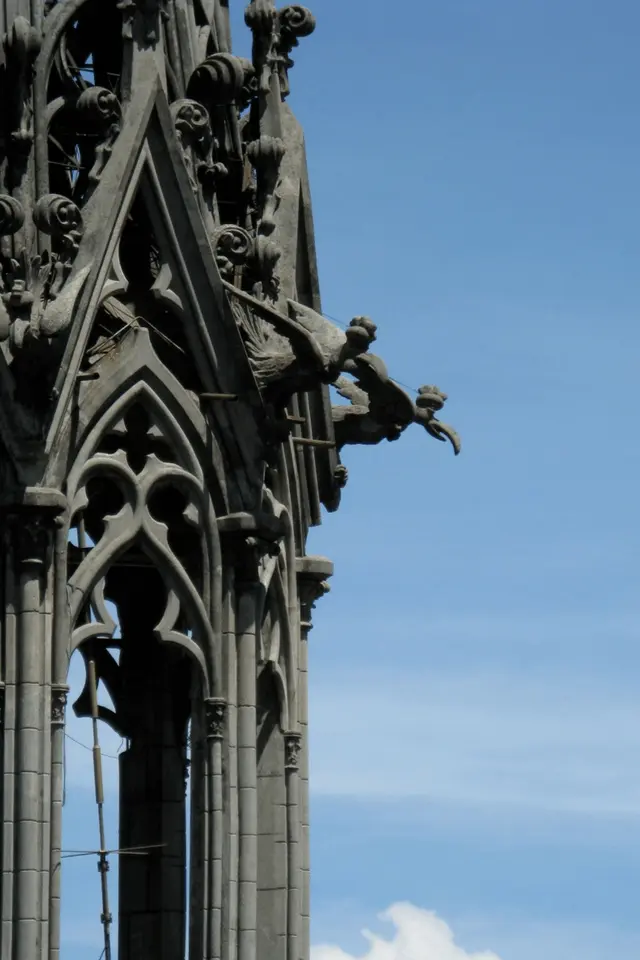
If you like adrenaline-filled adventure, the Basilica is the perfect place for one of the best activities to do in Quito. For the brave among you, make your way up the church’s northern towers. You’ll first have to navigate across a small wooden bridge before climbing steep metal steps to reach a platform on the tower where you can enjoy a 360 degree view of the Ecuadorian capital from a height of 79 meters (260 feet).
From Plaza San Francisco to the Central Market
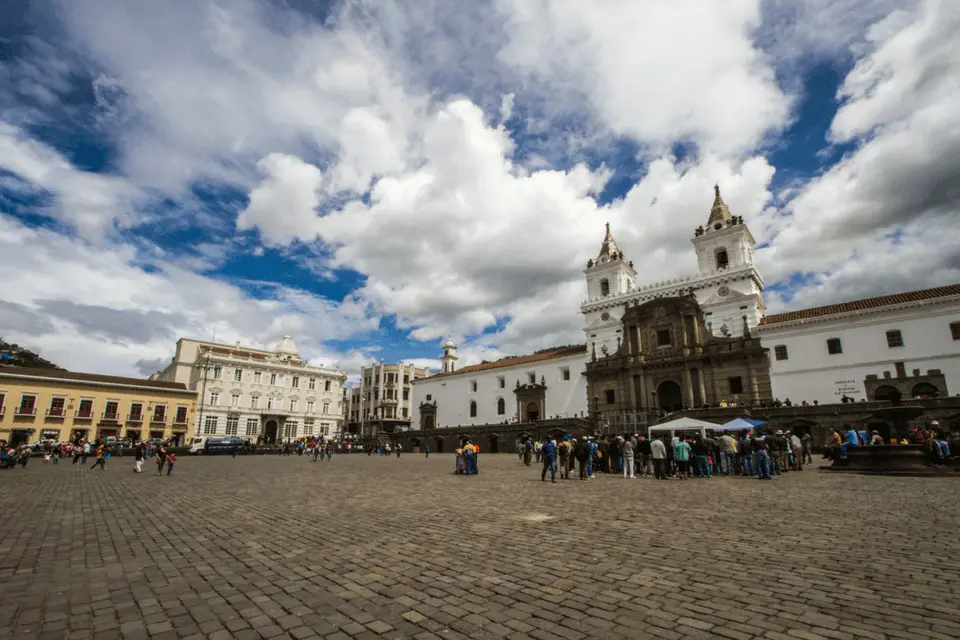
Ecuador boasts an abundance of brilliant colors and exotic flavors. One activity you can’t miss is exploring a locals’ market; truly one of the more fascinating activities you can do in Quito.
Along the periphery of Plaza San Francisco, you will find a variety of shops. The Nua Ami craft shop sells Ariu jewelry that combines mystical and contemporary elements. Nearby, the Homero Ortega store has dedicated itself to making famous toquilla (straw)
“Panama” hats for more than five generations.
When you arrive at the intersection with García Moreno, turn left until you reach the Independence Square (Plaza de la Independencia), which is a shining example of the social and cultural pulse of the Andean capital. If you are impressed with how beautiful everything looks from below, you can’t leave without first venturing up to the ceramic domes of the Cathedral; the Old Town is best viewed from the domes of its churches and convents. Also, it’s fun! Dare to venture into the darkness of the church’s secret passages, where the stone stairs are very narrow and the corridors can be uncomfortable to navigate. It’s worth it. Once on top, you will be rewarded with an amazing view, where you can observe how colonial architecture and Andean nature merge.
Follow Calle Chile downhill from the Archbishop’s Palace, and turn left onto Calle Guayaquil. Enter through Heladería San Agustín’s wooden doors, the same doors that you would have entered back in 1858. You will be greeted by the delicious smell of homemade food, prepared with ancestral recipes that continue to delight palates of both locals and visitors down the years. The atmosphere is quite unique: old radios and telephones are scattered around the red-walled premises, adorned with newspaper clippings that tell the Parlor’s story, as well as gold-framed mirrors. One glance toward the fresh humitas, giant empanadas, and figs, and you won’t be able to resist the temptation to taste a little bit of everything. It is, however, the artisanal ice creams that give San Agustín its name. The ice cream is completely handmade and all ingredients are directly sourced, from the harvest of the fruit to the ice collected from the mountains.
Following these traditional delicacies, go down Calle Mejía to reach Plaza Huerto San Agustín, an oasis of modern architecture in the middle of a Colonial world. The square, renovated in 2016, incorporates manicured green areas and pools of water with black, volcanic stone floors. Around these pools, you’ll find several wooden lizards representing an old legend about the square. It is said that, despite locals’ claims that there were thousands of lizards under the land of San Agustin, the owner refused to sell it. However, when a lizard appeared in his bed, he didn’t hesitate another moment to sell the land.
Finish your tour by walking down Calle Flores and then Olmedo Street. Once you reach Pichincha Avenue, go straight and cross underneath to reach the Central Market, one of the most visited markets in Quito since 1950.
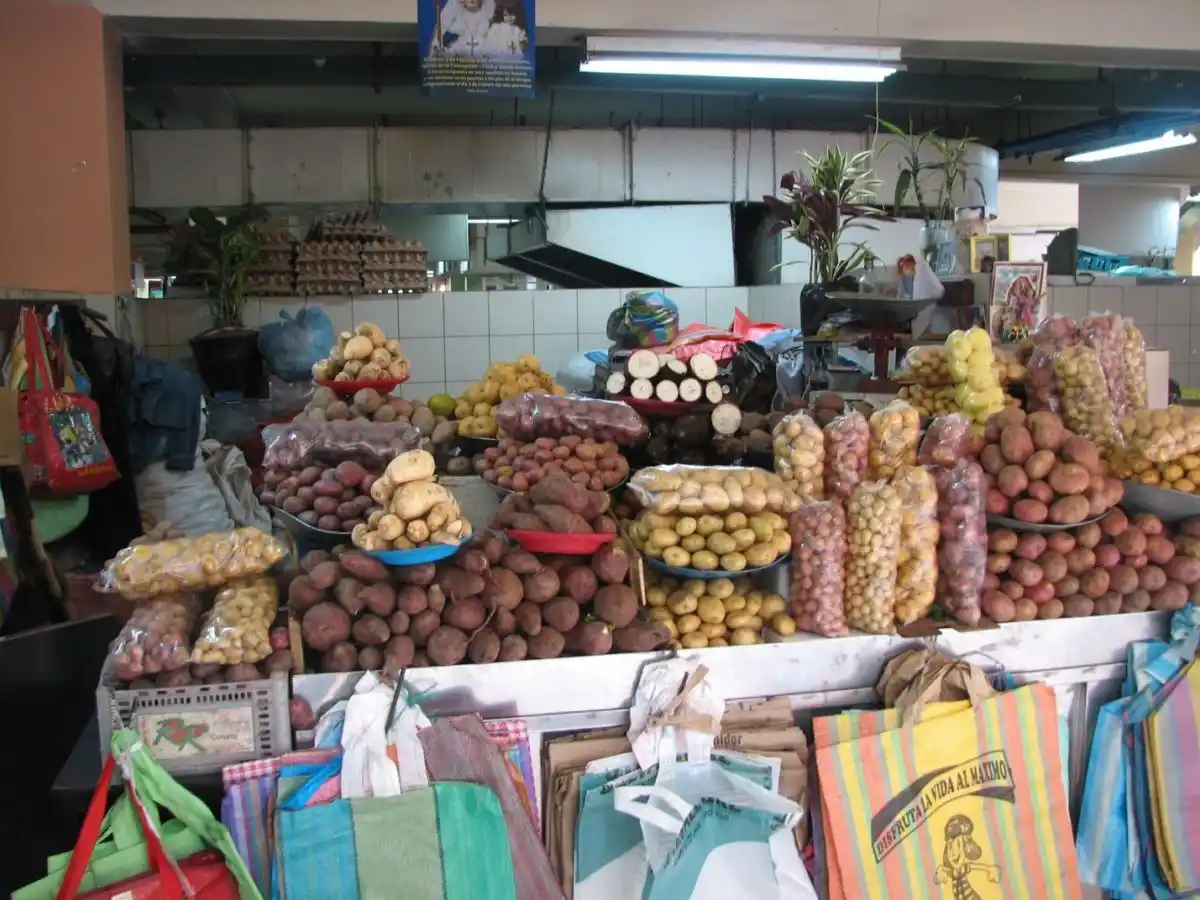
If you enjoy tasting exquisite and exotic food, a visit to the Central Market is an activity in Quito that is not to be missed. There is no better way to discover the delights that define Ecuadorian cuisine than to explore the market and the plates served at the dozens of tables, brimming with traditionally prepared dishes. You can find all kinds of food, from llapingachos (stuffed potato patties), hornado (slow-roasted pork), and a variety of ceviches. Also, the fruit stands are impossible to ignore. Each one is a mosaic of colors and textures, with endemic fruits decorating the tables and the market’s cement floor. Thanks to Ecuador’s diverse climates, all kinds of fruit are grown here, from watermelon and pineapple to the more exotic naranjilla, taxo, and salaak, an Amazonian fruit known as “snakeskin”.
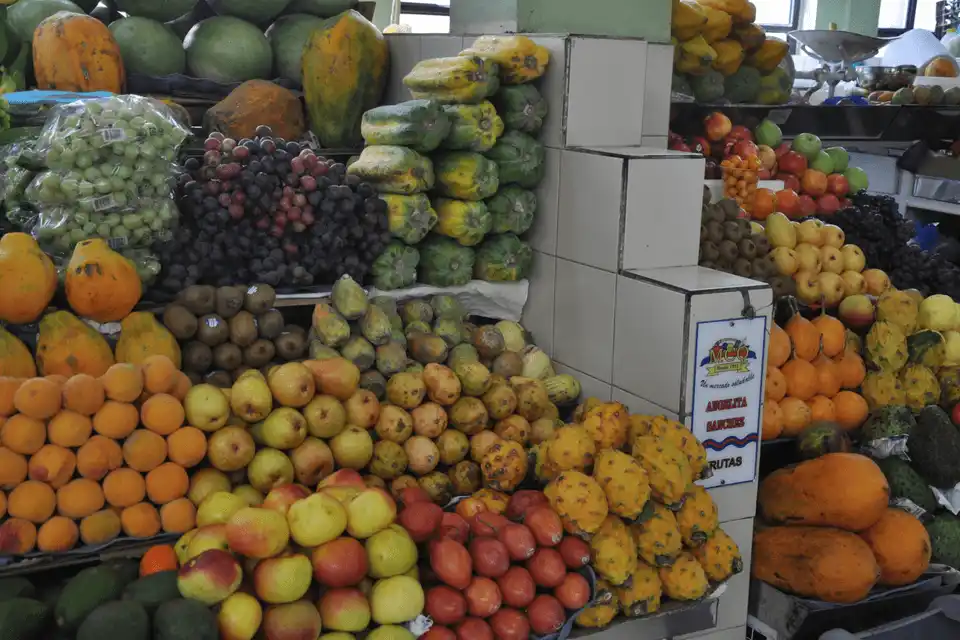
Here, Ecuadorians and tourists alike can explore decades of culinary tradition amidst brilliant colors and flavors.



